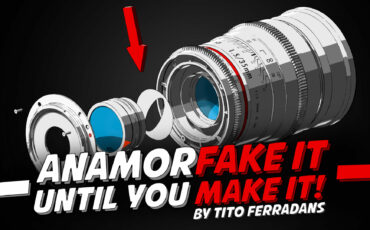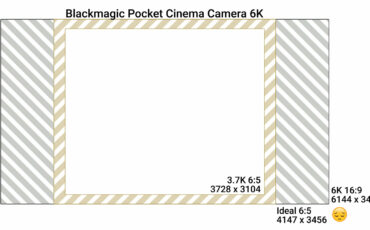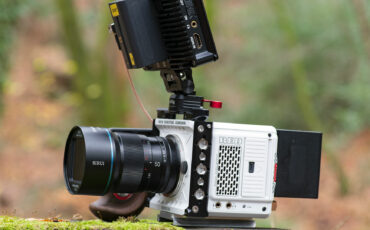How to Use Anamorphic Lenses – An Interview with Tito Ferradans
We had the pleasure of talking to Tito Ferradans about his favorite topic: anamorphic lenses and how to use them on a shoot, even if you’re working on a budget.
Tito runs a channel on Youtube called “Anamorphic on a Budget” and that’s what this channel is all about: Getting the anamorphic look with cinematic blur, wide aspect ratios, and crazy lens flares and streaks, but on a budget. You don’t need (very) expensive offerings from companies like Cooke, ARRI, or Vantage. Use your existing glass, modify it a bit, or use some kind of anamorphic adapter with it.

If you want to know more about Tito’s work, you might want to check out his approach of modifying a Samyang 35mm T1.5 Cine lens to “anamorphic” (link) or how to cine mod a whole set of Contax still lenses (link). Another important topic is sensor size when it comes to anamorphic shooting. Read Tito’s opinion on this subject here.
Anamorphic lenses and how to use them
In the video above, Tito explains that using “cheap” spherical lenses that produce a certain anamorphic look through modification or with the help of an adapter does not necessarily affect the quality of the resulting image. The main difference between a proper five-figure anamorphic cinema lens and cheaper consumer lenses modified for anamorphic shooting is not in the image quality itself, but in the handling, build quality and workflow efficiency on set.
If you’re lucky enough to be working on a big-budget production that’s being shot anamorphically, you’ll most likely be using a set of color-matched, high-quality anamorphic lenses. Focus and iris gears will be in the exact same position throughout the set, the front diameter will be the same for positioning a matte box, maybe the lenses will even have the same weight for seamless mounting on a gimbal or steadicam.

For lower-end shoots, a set of less expensive lenses modified to mimic anamorphic imagery is less ideal in terms of workflow, but the resulting images still look stunning.
Of course, a spherical lens will always be a spherical lens, even if it pretends to have an anamorphic look, but who cares, right? If it looks good, it looks good. It’s as simple as that.
DIY
I like Tito’s attitude of faking it until you make it. Just be resourceful, use the tools you have available (and your budget), and then let the creativity flow. Don’t focus too much on premium equipment, because in the end no one will notice if the final product looks good. Of course, using super expensive equipment can make things easier in terms of workflow, but you’ll obviously need a sufficient crew to handle it.
Link: Tito’s YouTube channel
What is your approach of shooting anamorphic? Share your experience in the comments below!































